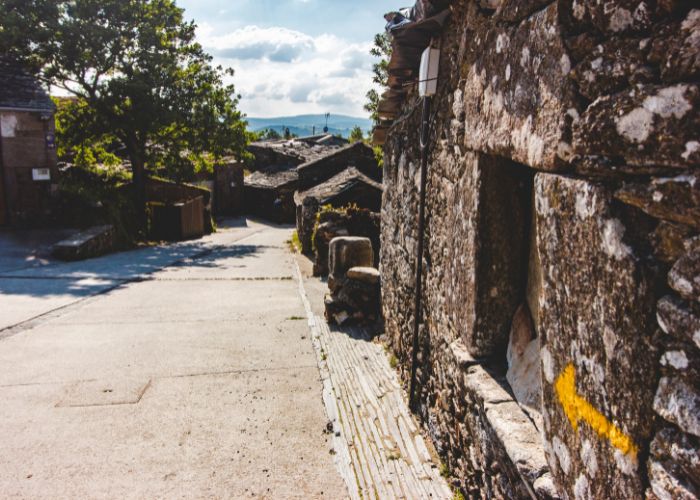Letters lamenting the “death of Compostela from overtourism” have been posted at the entrances to the city of Santiago de Compostela. The city received a record number of pilgrims this month.
More than 57,500 visitors flooded the small city with a compact historic heart. That is a significant increase from the 48,258 in the same period last year. Moreover, these figures confirm the continuing popularity of the Camino de Santiago. After a few years of relative calm, that popularity has grown explosively since the beginning of this year.
The letters, which are not so friendly in tone, come from an unknown author and were distributed in the city during the election campaign for the regional and local elections on Sunday, May 28. The text draws attention to some of the problems facing the historic city centre. These include the disappearance of local shops (“merca local”) and the transformation of many buildings into tourist apartments (“devólvenos a nosa vivenda” or “give us back our home”). Furthermore, the letter criticises the pilgrims’ “arrogant” attitude and calls for “silence”.
Good Practice Guide
Last summer, the neighbourhood association A Xuntanza of the Rúa de San Pedro already published a guide with good practices. This one became especially known and also went viral, after the European Youth Pilgrimage Santiago flooded with pilgrims in the first week of August 2022. The latest public appeal shows growing dissatisfaction among some Santiago residents over the mass arrival of walkers.
Impressive growth in the number of pilgrims
The number of pilgrims arriving in Santiago each year has seen impressive growth. In 2022, about 439,000 people completed the pilgrimage to the city in northwestern Spain. That was a significant increase from the previous year’s total, which was still marked by the pandemic, with fewer than 180,000 pilgrims. Then, in 2022, the Camino de Santiago recorded the highest number of pilgrims in more than a decade.
What is the Camino de Santiago?
The Camino de Santiago, or the pilgrimage to Santiago, stretches like a vibrant tapestry of culture and faith across the entire European continent. The end point is the resting place of Saint James in the Cathedral of Santiago de Compostela in Galicia, Spain. This Way of Saint James, a spiritual path that has been walked for more than a millennium, is an essential part of the Christian pilgrimage tradition.
The ‘peregrinos’, as the pilgrims are called in the Spanish vernacular, follow this path not only for spiritual reasons. The route is also a rich source of cultural, historical and recreational experiences. Of all the routes, the Camino Frances, starting in Saint-Jean-Pied-de-Port in France, and the Camino Portugues, starting in Porto, Portugal, are the most popular.
However, this pilgrimage is not an easy walk. Depending on the route chosen and the speed of the pilgrim, completing the journey can take weeks to months. But it is precisely this journey, with its challenges and rewards, that for many is the essence of the Camino de Santiago.
Related post: The other side of the pilgrims at the Camino de Santiago


